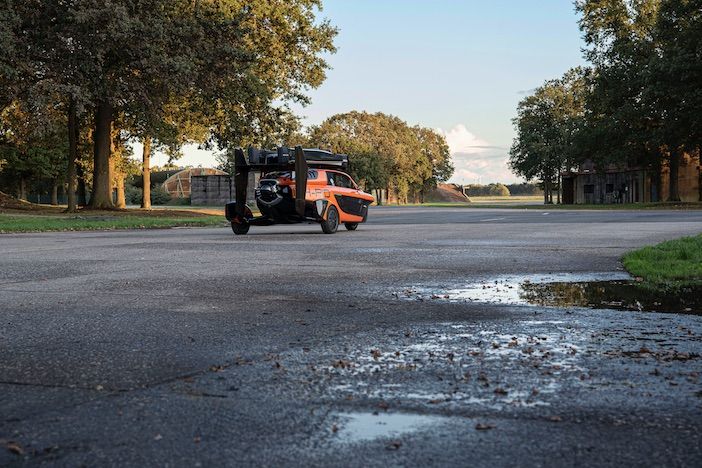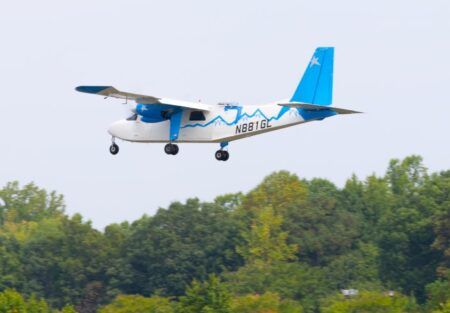The world’s first flying car took a major step towards becoming commercially available last week after the European Union’s aviation safety regulator agreed with industry about how to certify it.
EASA has completed the full certification basis for Pal-V’s Liberty flying car after more than ten years of testing by the Netherlands-based company.
The Pal-V Liberty is a two-seat gyroplane with a top speed of 180 km/h (110mph) in fly mode, a maximum take-off weight of 910kg, a range of 500km and flight endurance of four hours . On the ground, once it has been transformed into a three-wheeled car, it offers a top speed of 160km/h (100mph) and range of 1,315 kilometers (817 miles). It uses two Rotax 912iS engines.
PAL-V agreed with EASA to use the Certification Specifications for Small Rotorcraft, CS-27, as a starting point for the development of the flying car’s certification basis in 2009. Since then engineers at PAL-V have worked with EASA to amend a complete list of over 1,500 criteria to make it applicable to the Liberty.
That criteria list was published last year for review by industry experts and the final version was published last week.
The Liberty gained permission to be driven on roads in Europe last October, after eight months of testing. Certification testing of the Liberty has started and PAL-V expects the Liberty’s EASA certification to be finalized by 2022.
Robert Dingemanse, PAL-V’s CEO said, “Getting a flying car to the market is hard. It takes at least 10 years.
“Although we are experienced entrepreneurs, we learned that in aviation everything is exponentially stricter. Next to the aircraft, all aspects of the organization, including suppliers and maintenance parties must be certified.”
PAL-V’s head of airworthiness, Cees Borsboom said, “I’m proud to see the results of our work. We can now speed up the completion of the compliance demonstration phase.
“It’s hard to grasp the amount of work required to certify an aircraft. The sign-off of 1,500 requirements already in 2012, before starting manned test flights, was the beginning. More than 10 years of analysis, test data, flight tests, and drive tests, led to this important milestone.
“In parallel, we already started compliance demonstration to obtain the type certificate, which will be followed by delivery of vehicles to our customers.”
The EASA type certificate is valid for Europe and is also accepted in 80% of the world market, including the US and China. Pal-V has taken orders from people in 14 countries and is training its first “fly drivers” inhouse
Mike Stekelenburg Pal-V’s CTO said, “Safety is key in developing the Liberty, we are privileged to work with top experts of EASA. Their high safety standards also allow the Liberty to be used professionally.
“From the start, we have built the Liberty to comply with existing regulations. This strategy provides the fastest route to market.”
Listen to an exclusive interview with Robert Dingemanse, CEO of Pal-V in our podcast





